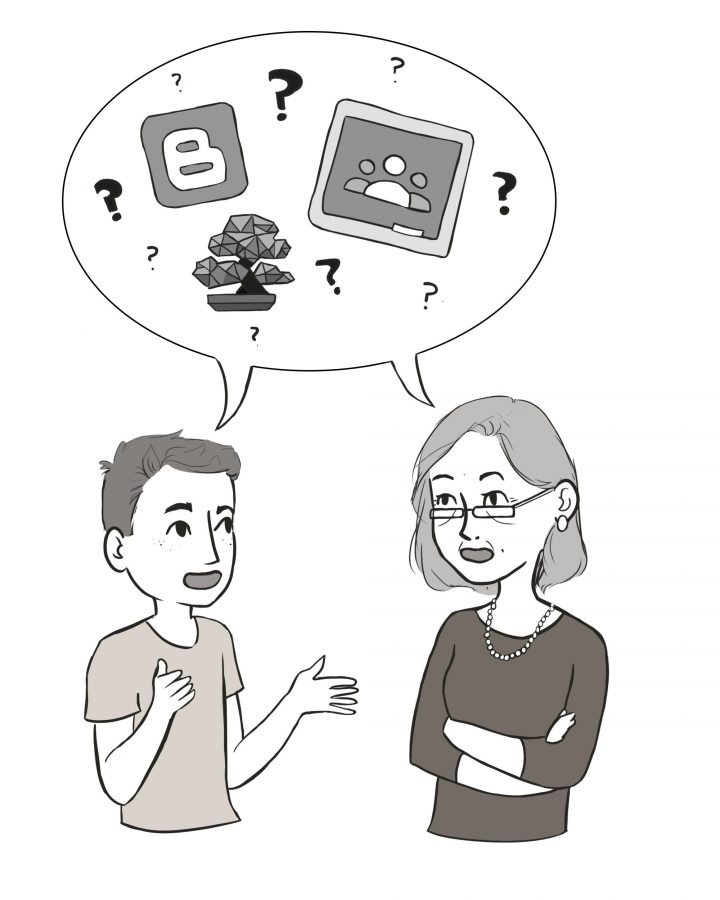Campus should be more proactive in improving digital learning
As part of MVLA’s shift to cloud and digital learning this year, the school introduced Google Apps for Education, a suite of services that includes Google Classroom, Drive, Docs, Calendar, Spreadsheets and assigning MVLA email accounts to all students through Gmail. In particular, the new Google Classroom platform, which allows teachers to digitally assign documents, spreadsheets, forms and homework announcements to students’ accounts, is an excellent starting place for all teachers to customize their digital teaching experiences.
But everyone on campus must recognize both the potential and flaws of Google Classroom and be proactive in exploring other options. Students’ digital learning can only improve if students, teachers and administrators strive to promote constant dialogue and actively pursue and experiment with various digital tools.
When used consistently and appropriately, Google Classroom enhances students’ learning experiences by streamlining all class and homework assignments onto one digital platform. According to a Talon survey of 61 teachers across departments, Google Classroom is used daily by 39.3 percent of teachers, and two to three times a week by 32.8 percent of teachers. Especially in departments where assignments, quizzes and labs are graded frequently and on an individual basis, Google Classroom reduces the amount of paper that students need to keep track of and streamlines teachers’ grading.
But Google Classroom has limitations that make it inefficient for certain teachers and subjects. According to the same survey, 8.2 percent of teachers never use Google Classroom. Teachers complain that it poses an inconvenience for departments that grade students by monthly units or portfolios, or largely assign work that cannot be done on a Chromebook or laptop, such as mathematics. This is expected — no digital platform can suit all teachers’ needs.
Teachers who are unsatisfied with Classroom turn to other forms of digital organization with students, such as class blogs or the MVLA teacher websites. This poses an unnecessary inconvenience to students who must check several different websites to keep up on homework.
In addition, teachers who decide to abandon Google Classroom often experiment with various platforms, such as Blogger, to better suit their curricula. This experimentation has and continues to confuse students, especially when teachers do not have a clear, consistent routine of where they post assignments, announcements or other important communication. But students should recognize that their teachers are only trying to find the best platform available to enhance different assignments.
In order to eliminate this confusion, teachers should commit to using one platform consistently for posting assignments and important announcements. Teachers must understand that constantly switching between different platforms creates confusion and inconveniences students.
More importantly, everyone on campus must recognize that these tools and experimentation are all in an effort to improve students’ learning experiences and no matter what the tool or platform is, there is no perfect, one-size-fits-all application. Technology and the assignments that teachers give will continue changing, and students must be proactive in giving constant feedback to teachers about the effectiveness of platforms.
Students are a valuable asset to teachers in that they are often more familiar with the newest digital platforms available for use. To help accelerate teachers’ exploration of the best platforms, students should take an active role in suggesting any new platforms to teachers and working with teachers to solve logistical issues.
No one is expected to be an expert on digital platforms. But students, teachers and administrators are all responsible for staying open to new possibilities and encouraging positive, constructive feedback to improve everyone’s experiences with digital learning. The administration must also continue soliciting feedback from teachers and students regarding digital learning. Instead of complaining or keeping quiet about inconveniences or frustrations, the school should see digital learning as an opportunity to increase dialogue and collaboration between teachers and students.



